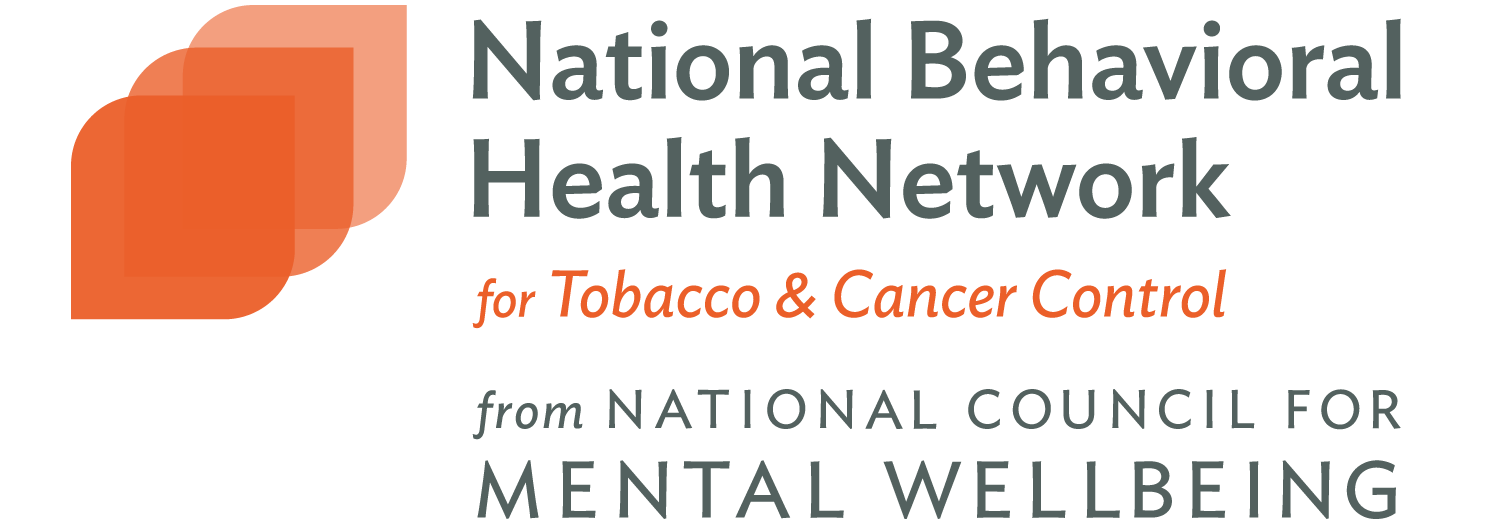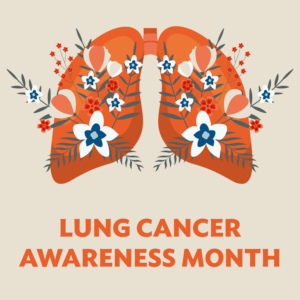Spread the Word About Lung Cancer and Mental Health
The American Lung Association reports lung cancer is the third most common type of cancer in the United States and the leading cause of cancer deaths. As we approach November and World Lung Cancer Awareness Month and National Lung Cancer Screening Day, the National Behavioral Health Network for Tobacco and Cancer Control (NBHN) calls on all mental health and substance use professionals to help raise awareness and promote action about lung cancer risks among people with mental health and substance use (MH/SU) challenges.
Commercial tobacco use has an uneven impact
Commercial tobacco use is responsible for 90% of lung cancer cases in the U.S. and is the leading cause of preventable disease, death and disability. But, while just 25% of U.S. adults have a MH/SU challenge, they consume nearly 40% of the cigarettes sold.
Health care and behavioral health providers can help reduce lung cancer risks
Mental health and substance use providers play a pivotal role in addressing tobacco- and cancer-related disparities. Supporting patients in quitting or reducing their smoking can significantly lower the risk of developing lung cancer. Research demonstrates that even a 50% reduction in smoking can substantially decrease cancer risk.
On an individual level, effective smoking cessation strategies include:
- Early detection: Early-stage diagnosis and intervention improve treatment outcomes.
- Nicotine replacement therapies (NRTs): Proven to help manage withdrawal symptoms and increase the likelihood of quitting.
- Motivational interviewing: A counseling approach designed to enhance a person’s motivation to reduce or eliminate tobacco use.
- Peer support specialists: Incorporating lived and living experiences into treatment provides relatable support for those seeking to quit.
There are also ways to create lasting change at the community and policy levels, such as:
- Adopting comprehensive tobacco-free policies in public spaces and workplaces.
- Educational campaigns to raise awareness of the harms of commercial tobacco use and promote available cessation resources.
- Addressing social drivers of health reduces barriers to care, including transportation and financial assistance for screenings.
Early detection and screening are critical.
Prevention is key, but lung cancer screenings can detect cancer at an early stage when it is more treatable, significantly increasing survival rates. People at the highest risk include those ages 50-80 with a history of heavy smoking, even if they have quit within the last 15 years, as well as those with prolonged exposure to secondhand smoke.
Despite the benefits, many people with MH/SU challenges remain hesitant toward screenings. Treatment providers can make a difference by encouraging their clients to participate in screenings and by emphasizing that early detection leads to better treatment outcomes.
Stand together against lung cancer
Together, we can make a difference by prioritizing mental wellbeing across the cancer continuum, reducing lung cancer risk and improving outcomes for those most vulnerable. We look forward to continuing this important work alongside our dedicated partners and community members. Explore the NBHN website to access lung cancer resources, toolkits and upcoming events dedicated to lung cancer awareness and prevention.


